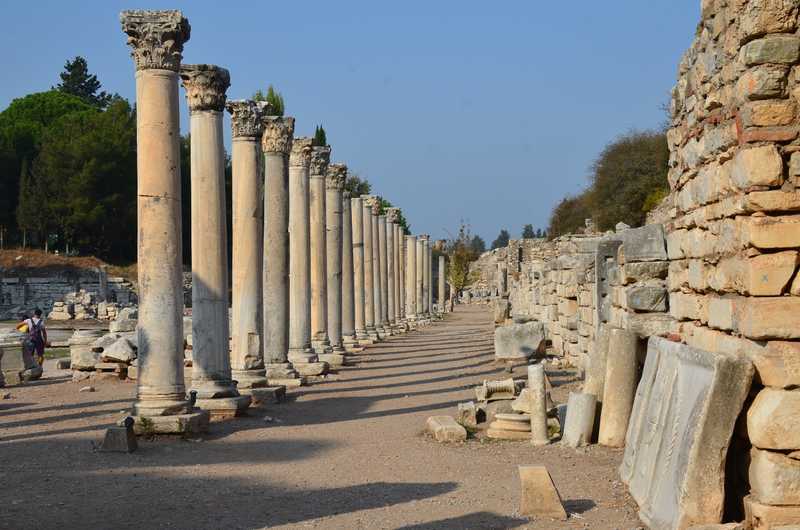The Tetragonos Agora lies in the western part of the Matble Way, the avenue leading ftom the Great Theatre to the Library of Celsus. The agora was the main and largest commercial centre of Ehesus. Porticoed shops on three sides of the square sold food and produce, as well as a large variety of handcrafts. The shops opened into storerooms at the back.
Construction of the Tetragonos Agora beagan in the third century BC, although the ruins today date from the reign of Emperor Augustus. The agora houses a complex of buildings arranged in a square plan of 154 x 154 metres. In the centre of the complex there is a square courtyard with sides of 112 metres, and this in turn is surrounded by stoas containing two aisles and two-soteryed shops. The twin-aisled Doric basilica in the eastern section on the Marble Way was built in the time of Emperor Nero and possible used as a courthouse. After being destroyed in an earthquake, the agora was revived in the fourth century AD. Extensions were made during the time of Augustus and Nero and a restoration undertaken under Emperor Caracalla (211-217).
The agora benefited from a direct link to the harbour and had three exterior memorial gates facing east. The vaulted southern gate, on the Library of Celsus side had three decorative panels. A bronze inscription over the gate suggests that it was built in the third century BC by Mazaeus and Mithriadtes, two slaves who had been freed by the emporer. The gate was duly dedicatd to the emperor, Augustus, his wife, Livia, their daughter, Julia, and son-in-law.
Further inscriptions on the gate set out the rules and price lists applicable in the agora. Each of the walls flanking the gate contains two apsidal niches. The Tetragonos Agora remained functional until the seventh century AD. Other architectural features within the complex included fountains, altars to the gods and heroic figures, and statues of the city's dignitaries. Mounted on a podium, the Ionic western gate measured 17 metres wide and was positioned at the eastern end of the main avenue lingking the city with the harbour. This served as the main entrance to the agora.

